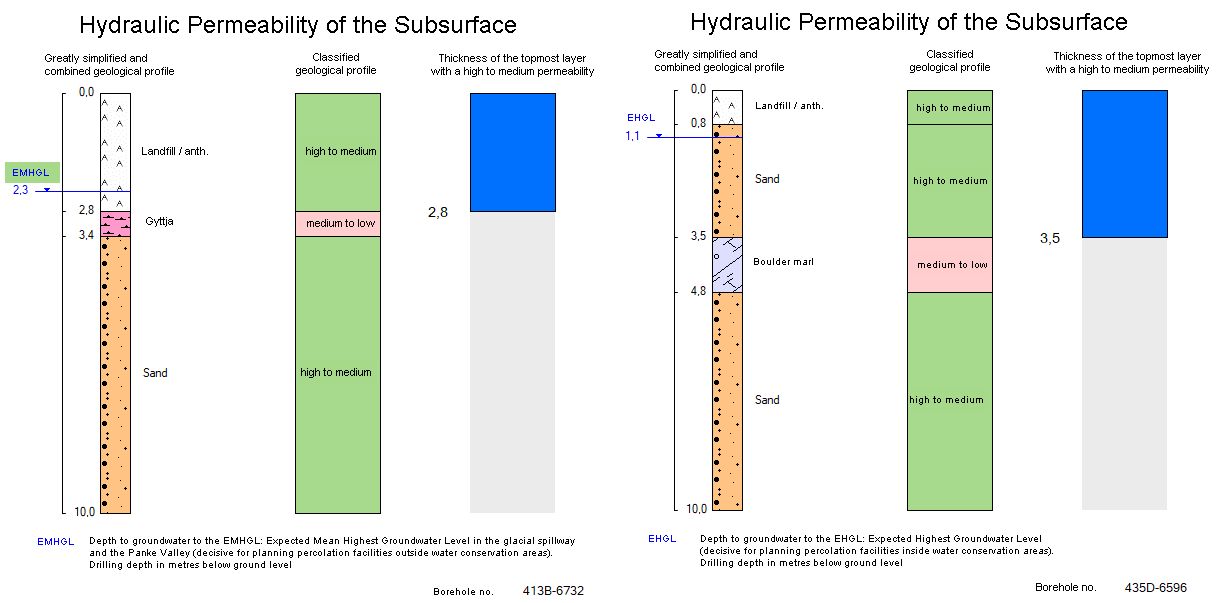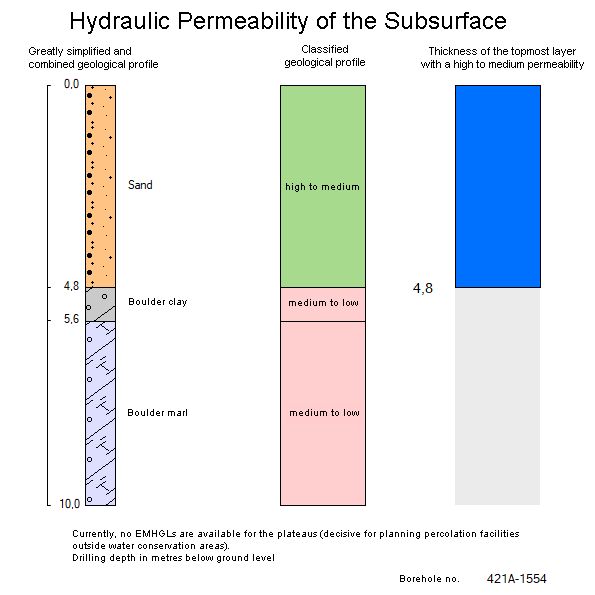These maps illustrate the thickness of the sediments with a high to medium hydraulic permeability down to the first cohesive layer, i.e. those sediments whose hydraulic permeability is only medium to low, for the State of Berlin.
The calculation from the ground level to the first cohesive layer was carried out in Map 02.22.1; Map 02.22.2 presents the calculation starting at one metre below the ground level to the first cohesive layer.
The thickness of sediments with a high to medium hydraulic permeability is shown in four or three colour shades on the map (0 -1 m, 1 -2 m, 2 -5 m, >5 m); in the case of measurements disregarding the first metre, the map only displays three classes (1 -2 m, 2 -5 m, >5 m). The selected classification is based on the requirements of different types of percolation facilities (surface, swale or swale-infiltration trench).
Table 2 illustrates the classification of individual boreholes into the thickness class of sediments with a high to medium hydraulic permeability down to the first cohesive layer.




